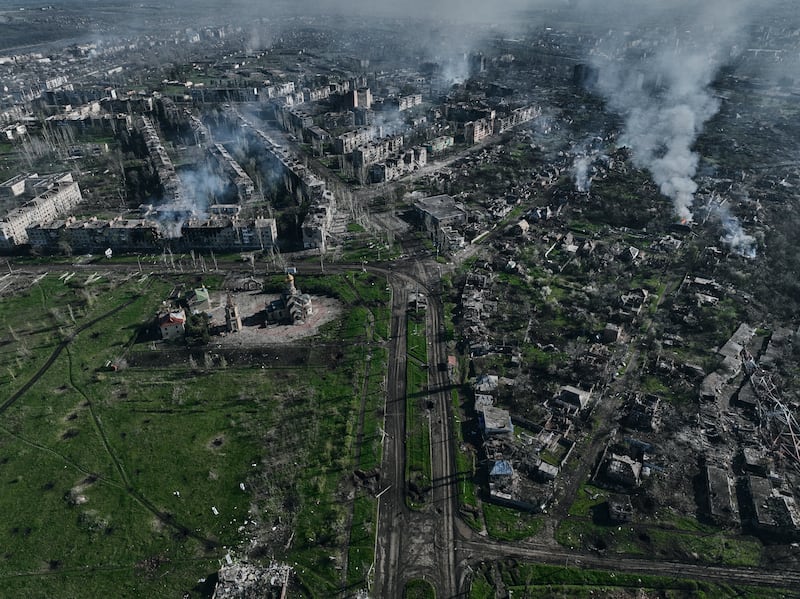A Russian missile strike on Ukraine has injured at least 34 people and cut electricity to thousands of residents, as Kyiv’s military said its troops were successfully counter-attacking against Moscow’s invasion force in parts of the ruined city of Bakhmut.
Ukraine said its air defence systems shot down 15 of 18 cruise missiles fired at the country in the early hours of Monday, but rockets struck the eastern city of Pavlohrad, damaging an industrial site and apartment blocks, houses and schools.
Ukrainian officials said 34 people, including five children, were hurt in the attack, and that “significant damage” to electricity networks in the eastern regions of Dnipropetrovsk and Kherson had left more than 18,000 people without power. It came three days after a Russian strike on the central city of Uman killed 23 civilians, including six children.
Collaborationist officials in Russian-occupied areas of eastern Ukraine said the missile strike on Pavlohrad hit significant amounts of weaponry and fuel destined for the Ukrainian military, and that their destruction would hinder its preparations for a spring counter-offensive.
Each side is targeting the other’s supply lines in advance of an anticipated uptick in fighting: last Saturday, a large part of a major fuel depot in occupied Crimea was engulfed in flames due to what Russia said was a drone attack by Ukraine.
Russia blamed a Ukrainian artillery strike for the deaths on Saturday of four people in a village in the Bryansk region that borders Ukraine, and where on Monday a cargo train was derailed by what the local governor described as the detonation of an “explosive device” on the tracks.
Kyiv believes that Russia is using missile attacks and aircraft sorties to “map” the locations of Ukraine’s air defence units, which are now using several high-tech western systems such as the US-made Patriot and German-built Iris-T.
Military analysts say Russian forces in much of occupied Ukraine have taken up defensive positions in anticipation of a major Ukrainian counter-offensive, in which the advanced weapons delivered by Kyiv’s allies are expected to play a key role.

The most intense fighting is in Bakhmut, a road and rail hub in partly occupied Donetsk region that has been reduced to ruins by months of artillery fire followed by intense street fighting.
Russia’s Wagner mercenary group, which is leading Moscow’s bid to seize Bakhmut, claimed two months ago that Ukraine’s forces in the city were almost surrounded and should retreat.
Kyiv sent reinforcements, however, and argues that fighting for Bakhmut not only prevents Russia advancing further in Donetsk region, but also ties up and grinds down some of Moscow’s most powerful combat units, weakening their potential for future attacks.
“Intense fighting continues in the Bakhmut direction. The enemy launched numerous attacks, trying to break through the defence of our positions ... However, thanks to the steadfastness and courage of the defenders of [Bakhmut], the enemy’s actions failed,” said Oleksandr Syrskyi, commander of Ukraine’s ground forces.
“The situation is quite complicated. At the same time, in some parts of the city, the enemy was counter-attacked by our units and abandoned some positions,” he added.
Fourteen months into a full-scale Russian invasion of Ukraine, Pope Francis said the Vatican is involved in a behind-the-scenes bid to end the conflict.
“There is a mission in course now but it is not yet public. When it is public, I will reveal it,” he said en route to Rome on Sunday after a three-day visit to Hungary.















